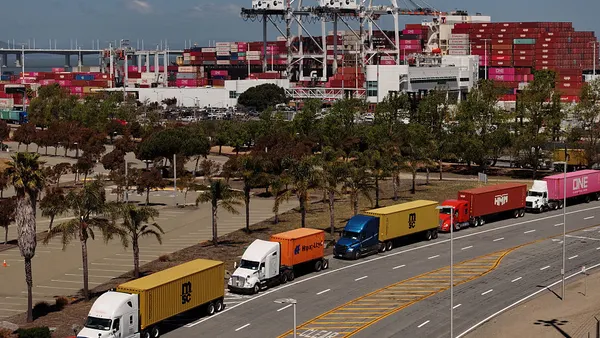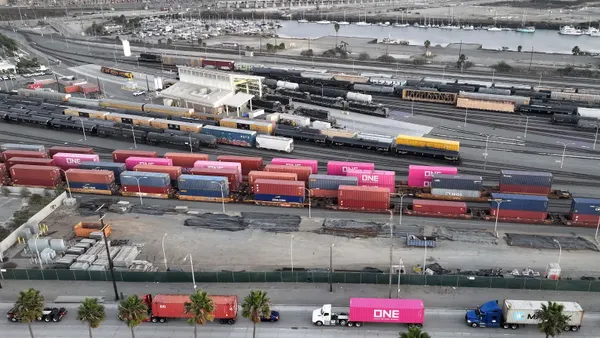Dive Brief:
- The DAT load-to-truck ratio, a measure of demand in the spot trucking market, was up YoY across van, flatbed and reefer markets in December, according to the latest figures from the load board.
- DAT's figures show spot load posts rose more than 69% YoY while truck posts fell 2% YoY, which means fewer trucks were left to handle a swelling freight market.
- The increased demand has pushed up spot rates, which in December were up nearly 27% YoY for van rates, more than 14% for flatbed rates and 16% for reefer rates.
Dive Insight:
An upswing in trucking rates stemming from a capacity crunch resulted in an expensive trucking market for shippers in much of 2020.
Cass' latest Freight Index showed expenditures were up almost 6% in November as rate increases in the spot market have begun to spill over into contracts.
The demand at the end of the year was driven by low inventories — the latest figures are for October — that businesses were working to restock. This will keep the freight market hot in the near term, according to Cass.
DAT expects restocking to continue into Q1 of 2021, but it does "not think that the continued demand for durable goods will continue at its current pandemic pace," according to its December rate forecast published last month.
The high freight rates have correlated with trucking companies investing in their fleets, evidenced by a rebound in Class 8 truck orders and trailer purchases through the second half of 2020. The buying activity, coupled with smaller fleets entering the market due to high spot rates, should bode well for capacity moving forward.
"Despite, or arguably because of, the pandemic-related pause in Q2, commercial vehicle demand is heading into 2021 with a bang, resulting from consumer and business spending substitution from services to goods, inventory rebuilding, and the sidelining of drivers, just to mention a few," ACT President and Senior Analyst Kenny Vieth said in an emailed release.
But there are concerns on the driver availability side, according to DAT, which said the Drug and Alcohol Clearinghouse has found 46,000 violations since last January. Drivers with violations cannot operate commercial vehicles until they complete a return-to-duty process, so the violations could contribute to the capacity crunch.














